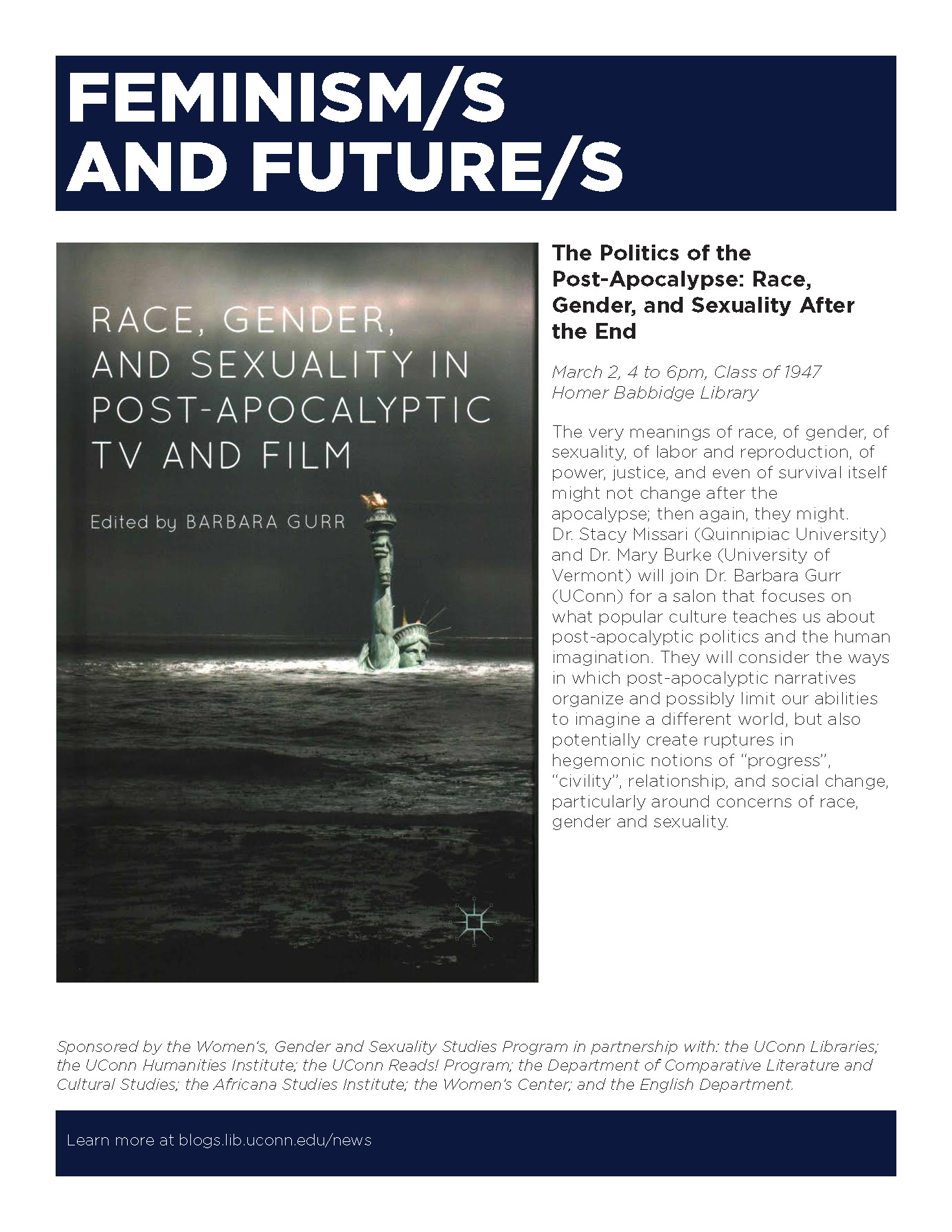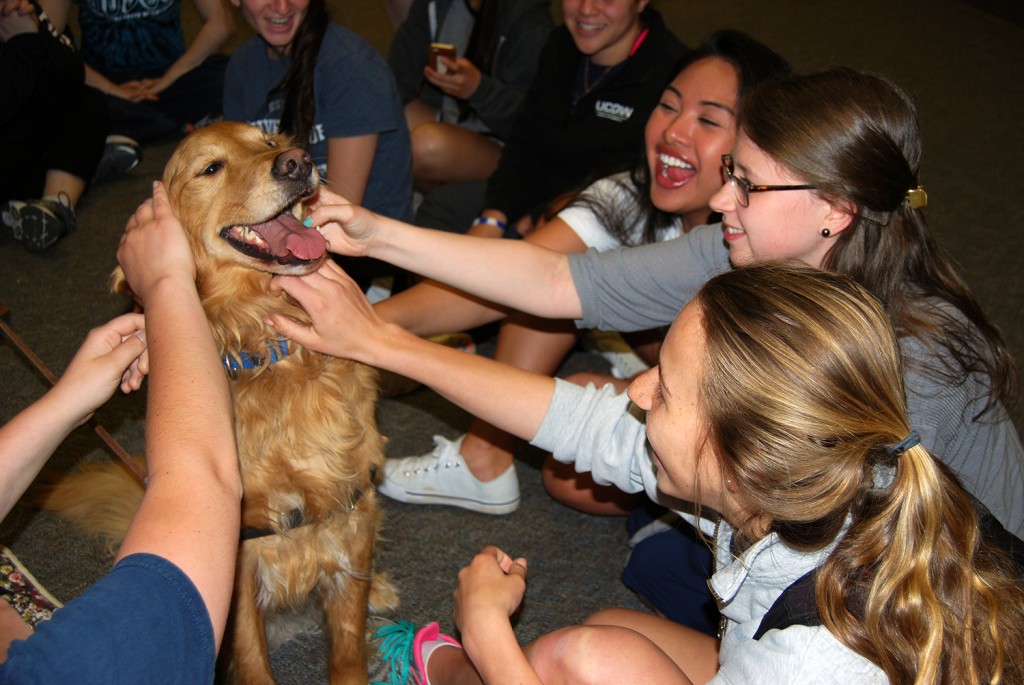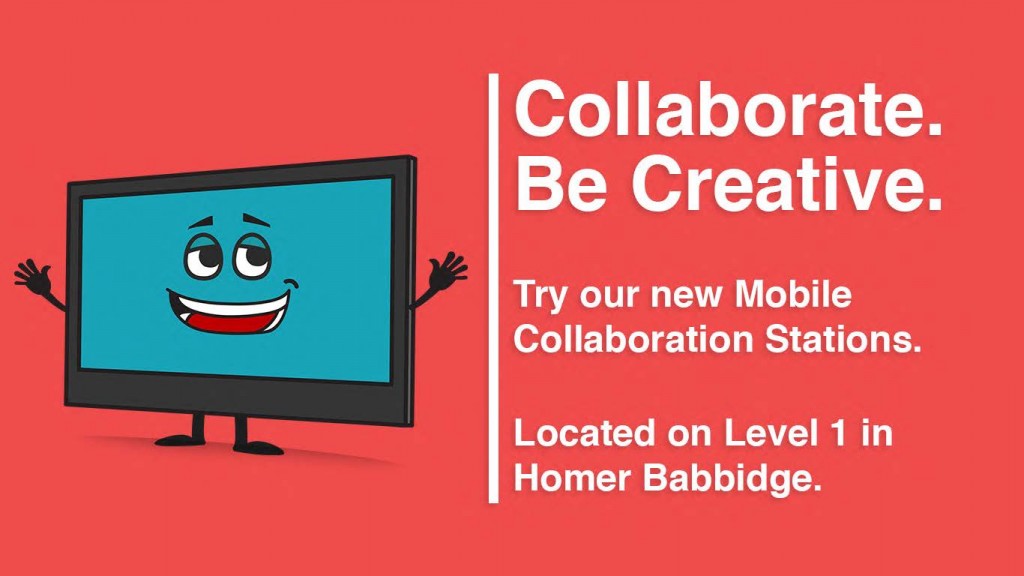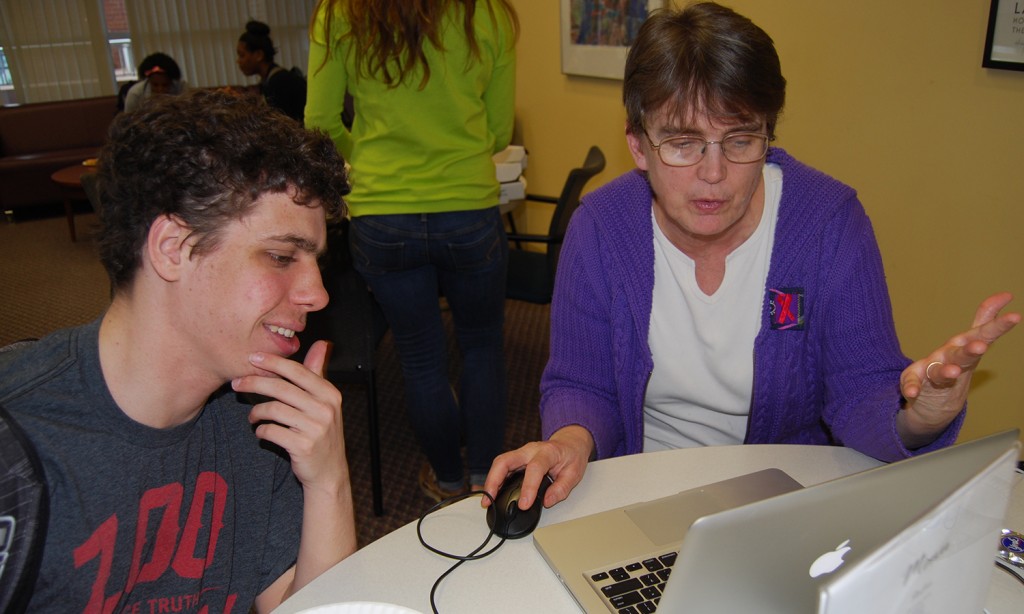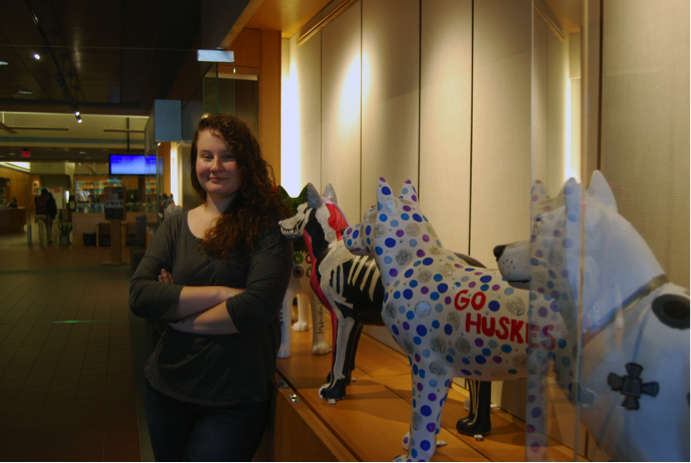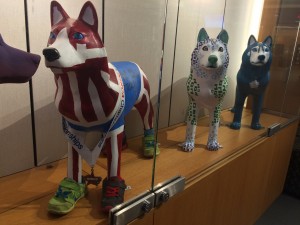Library to host Art + Feminism Edit-a-thon
“We change knowledge, we change the world.”
This mantra is a guiding principle of Dr. Alexis Boylan in co-organizing UConn’s Art+Feminism Edit-a-thon.
Founded on the weekend of International Women’s Day in 2014, this annual event called upon participants at dozens of locations worldwide to edit and create Wikipedia articles on women and the arts. The event aims to address inequalities that have existed in women’s representation on the site.
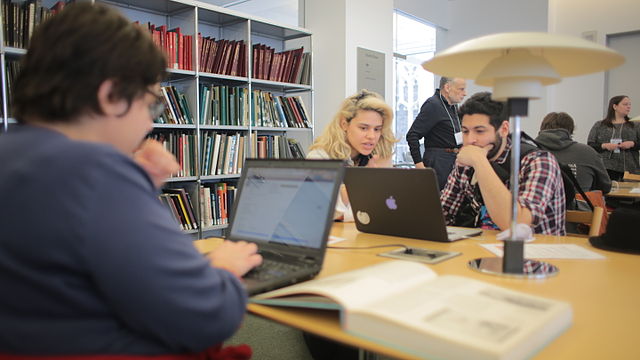
Participants work at the Art+Feminism Edit-a-thon 2015 at the Museum of Modern Art in New York. (By TheDasherz – Own work, CC BY-SA 4.0, https://commons.wikimedia.org/w/index.php?curid=38782052)
To help fix this problem, UConn will host their own Edit-a-thon on March 6, and students, faculty and other members of the UConn community will work tirelessly for eight hours to give women artists more visibility on the web. Boylan, who is an assistant professor of Art & Art History and Women’s, Gender, and Sexuality Studies (WGSS) believes it is a great opportunity for members of the UConn community to make a difference.
Since Wikipedia is crowdsourced, said Boylan, it has been representative of society for a long period of time.
“And historically,” she said, “it has been important to prioritize white male creativity, knowledge and ownership.”
The Edit-a-thon is looking to have members of the UConn community do something about it.
Boylan thinks that UConn is a perfect place for the Edit-a-thon because it is “an incredibly smart campus that cares about knowledge, and people here are willing to give their time to something they care about.”
Boylan added that, especially in the past two years, members of the UConn community have been a presence in the conversation about education and diversity, and this event will be another way to demonstrate leadership in this area.
Faculty, students and anyone who is interested are invited to attend the Edit-a-thon on Sunday, March 6, from 11 a.m. to 6 p.m. in Electronic Classroom 2 at Homer Babbidge Library. In case you weren’t already tempted enough, the event is free and pizza will be provided. Participants are not required to stay for the entire Edit-a-thon, and they may bring a laptop to use if they wish, but it is not required.
No technical experience is needed, according to Kathy Labadorf, WGSS Librarian and co-organizer of the event with Boylan. A wide variety of skills are needed including research and editing, and staff will be on-hand for assistance.
Boylan and Labadorf hope that the impact of the event will reach far beyond the day itself.
“Wikipedia is a living entity, and you can still participate long after the event by editing and adding articles,” said Boylan.
“In today’s world, education is about being a contributor as well as a receiver of information, and this event promotes that,” Labadorf said.
To RSVP for the event, please visit the Storrs Edit-a-thon Wikipedia page. There, you can register for the event as well as add suggestions to the list of articles that need improvement or expansion.
Researchers – Get Your Data On!
Want to learn about some of the tools out there to help effectively manage and analyze your research data? Ever wondered what OpenRefine, Introduction to R, Data analysis and visualization in R and SQL for data management can do for you?
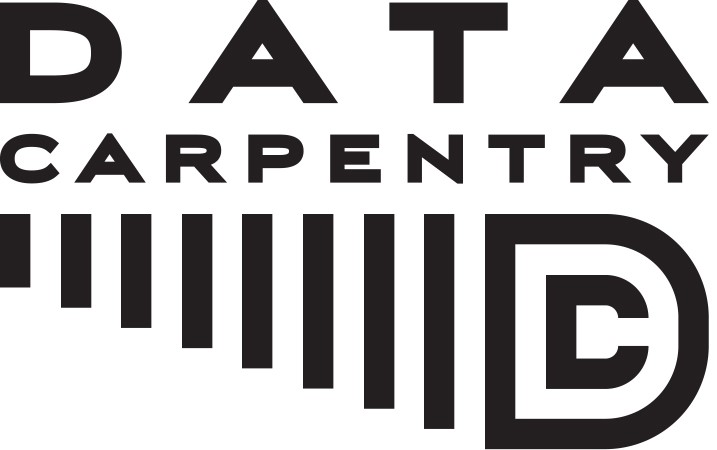 Join us for a two-day Data Carpentry workshop on Mar 7-8 from 9:00 am-4:30 pm and explore basic concepts, skills and tools for working more effectively with data. This will be focused on ecology/natural resources research data but anyone is welcome to attend. UConn participants can register for either the UConn Associate or the General seats.
Join us for a two-day Data Carpentry workshop on Mar 7-8 from 9:00 am-4:30 pm and explore basic concepts, skills and tools for working more effectively with data. This will be focused on ecology/natural resources research data but anyone is welcome to attend. UConn participants can register for either the UConn Associate or the General seats.
Registration and laptops with specific software are required. Information on both of these be found on the Data Carpentry website.
Want to learn more?
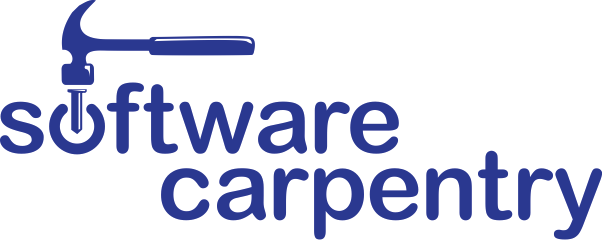 On March 21-22 we will offer a second two-day workshop that will focus on the basic concepts and tools for your research, including program design, version control, data management, and task automation. This will also be focused on ecology/natural resources research data. UConn participants can register for either the UConn Associate or the General seats.
On March 21-22 we will offer a second two-day workshop that will focus on the basic concepts and tools for your research, including program design, version control, data management, and task automation. This will also be focused on ecology/natural resources research data. UConn participants can register for either the UConn Associate or the General seats.
Registration and laptops with specific software are required. Information can be found on the Software Carpentry website.
Feminism/s And Future/s Salons
The UConn Libraries is pleased to be partnering with the Women’s, Gender and Sexuality Studies Program on their upcoming discussion this March.
“The Politics of the Post-Apocalypse: Race, Gender, and Sexuality After the End”
March 2, 4 to 5:30pm, Class of 1947, Homer Babbidge Library
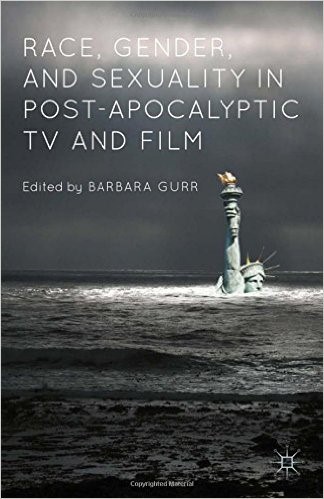 The very meanings of race, of gender, of sexuality, of labor and reproduction, of power, justice, and even of survival itself might not change after the apocalypse; then again, they might. Dr. Stacy Missari (Quinnipiac University) and Dr. Mary Burke (University of Vermont) will join Dr. Barbara Gurr (UConn) for a salon that focuses on what popular culture teaches us about post-apocalyptic politics and the human imagination. They will consider the ways in which post-apocalyptic narratives organize and possibly limit our abilities to imagine a different world, but also potentially create ruptures in hegemonic notions of “progress”, “civility”, relationship, and social change, particularly around concerns of race, gender and sexuality.
The very meanings of race, of gender, of sexuality, of labor and reproduction, of power, justice, and even of survival itself might not change after the apocalypse; then again, they might. Dr. Stacy Missari (Quinnipiac University) and Dr. Mary Burke (University of Vermont) will join Dr. Barbara Gurr (UConn) for a salon that focuses on what popular culture teaches us about post-apocalyptic politics and the human imagination. They will consider the ways in which post-apocalyptic narratives organize and possibly limit our abilities to imagine a different world, but also potentially create ruptures in hegemonic notions of “progress”, “civility”, relationship, and social change, particularly around concerns of race, gender and sexuality.
The second salon in the series is titled
“The History of Science Fiction and Social Change”
date tbd
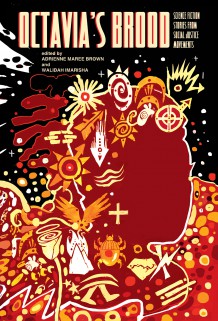 All organizing is science fiction. A world where everyone has a home, a great education, community based transformative justice, nourishing food to eat and clean water to drink, where we are in right relation to the planet, to each other, where are free to be and love ourselves as we are, to grow together? We have never seen it; its possibility remains speculative. Yet speculative fiction, perhaps particularly science fiction, offers a powerful opportunity to speculate-into-being. Adrienne Maree Brown, co-editor of Octavia’s Brood: Science Fiction Stories from Social Justice Movements (AK Press 2015), will facilitate a salon focused on the history of science fiction and social change, considering ways to use science fiction as a practice ground for social justice strategizing and vision.
All organizing is science fiction. A world where everyone has a home, a great education, community based transformative justice, nourishing food to eat and clean water to drink, where we are in right relation to the planet, to each other, where are free to be and love ourselves as we are, to grow together? We have never seen it; its possibility remains speculative. Yet speculative fiction, perhaps particularly science fiction, offers a powerful opportunity to speculate-into-being. Adrienne Maree Brown, co-editor of Octavia’s Brood: Science Fiction Stories from Social Justice Movements (AK Press 2015), will facilitate a salon focused on the history of science fiction and social change, considering ways to use science fiction as a practice ground for social justice strategizing and vision.
Both salons are sponsored by the Women’s, Gender and Sexuality Studies Program in partnership with: the UConn Libraries; the UConn Humanities Institute; the UConn Reads! Program; the Department of Comparative Literature and Cultural Studies; the Africana Studies Institute; the Women’s Center; and the English Department.
New Liquid Galaxy technology can take you around the world in seconds
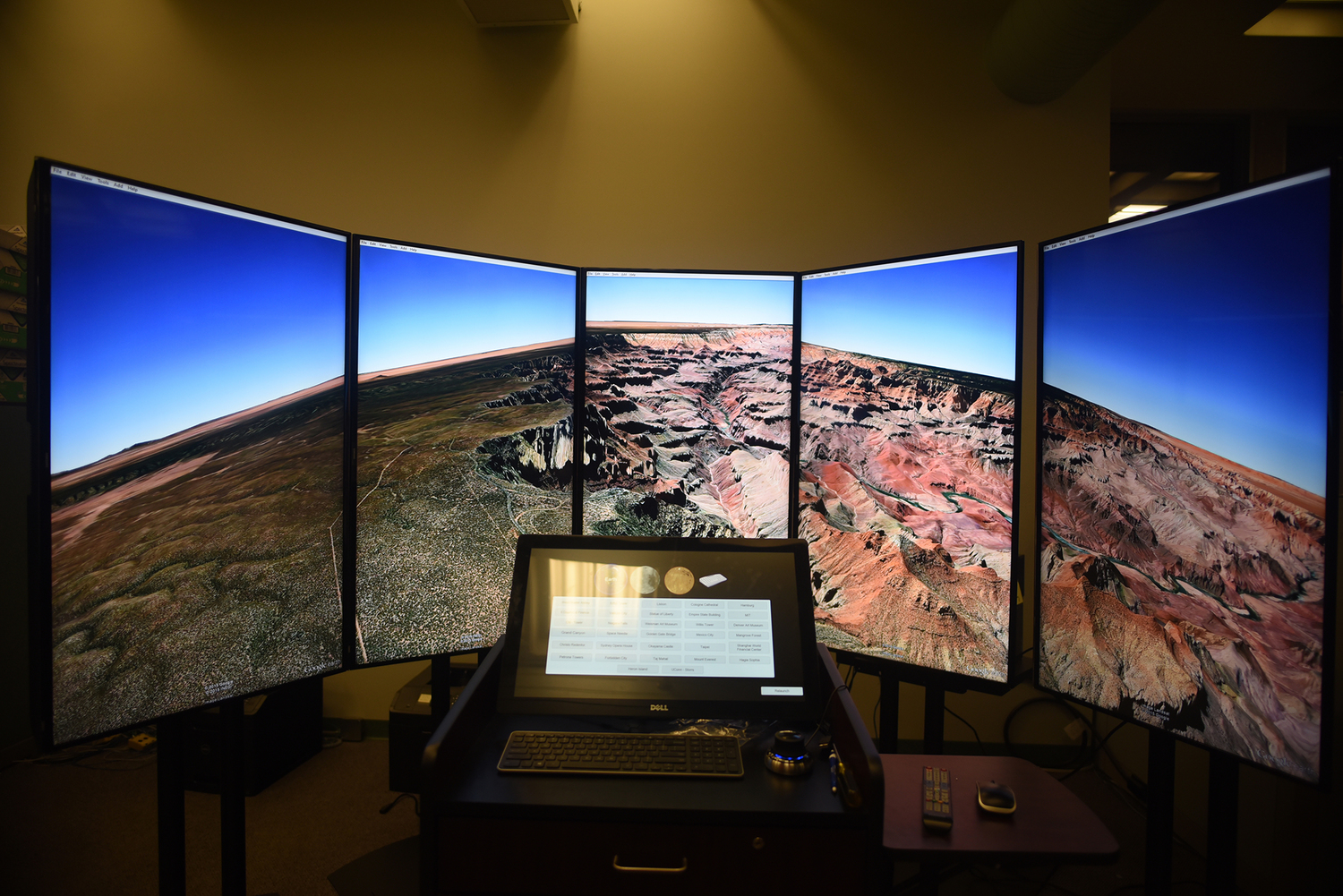
The new Liquid Galaxy technology at Homer Babbidge library promises a diverse range of educational uses. (Photo credit: Allen Lang/The Daily Campus)
UConn students and faculty can now visit the pyramids at Giza, the Amazon rainforest, or the Roman Coliseum all without ever leaving the library.
A Google Liquid Galaxy has just been installed at Homer Babbidge, located on the first floor near the computers, replacing what was previously a print station. It consists of a center console with five monitors facing you in a semi-circle. Users can type in locations on the touch screen and instantly view places around the world in this immersive Google Earth experience.
“It’s like seeing the world without actually taking a vacation,” said Alec Suprenant, an undergraduate senior who works in library’s IT department and helped with the installation of the technology.
Other universities are beginning to implement the technology as well, and can provide inspiration to students at UConn as they come up with innovative ways to use the Liquid Galaxy. For example, an art history professor at UNC Chapel Hill is using it to better understand the landscape where a medieval aviation experiment took place.
Many different subject areas can find uses for the Liquid Galaxy. For example, geography students can get the literal “lay of the land” and map out changes over time. Those interested in urban planning or architecture can look at cities around the world, while history classes can visit faraway historical sites with a touch of a button. Archaeology professors can virtually transport students to a dig site. Journalism students can even do research or fact checking for their stories by virtually visiting other locations, like the professional journalists at Storyful.com do.
The Liquid Galaxy is sure to inspire future research projects, educational presentations, and new ways of learning and teaching. Many industries are also starting to employ the technology, so students can benefit from learning how to use it early on. For example, real estate companies have been able to virtually showcase properties, and tourism and hospitality workers can give guests an inside look at various resorts and vacation spots.
Or, if none of this appeals to you, looking up your house is always fun.
“I would estimate that when people first see the Liquid Galaxy, about 60 to 70 percent of them look up their house first,” said Suprenant.
Paws to Relax returns for finals week!
You may be checking out a million articles on Buzzfeed about adorable dogs this finals week, but what is better for easing stress than getting to play with ACTUAL, REAL LIFE DOGS?
Paws to Relax understands your struggle, and to help you out they will be on Level 1 of Homer Babbidge Library every day during finals week! The dogs are registered with national organizations dedicated to improving human health through the use of service and therapy.
Here’s the schedule, so you can visit your doggie of choice (or just go see them all):
Monday, December 14th
1:00 – 2:00 Gerri & Suzie (German Shepherd)
2:00 – 3:00 Michelle & Vinny (English Mastiff)
3:00 – 4:00 Nancy & Cooper (German Shepherd)
Tuesday, December 15th
1:00 – 2:00 Paula & Bella (Schnoodle)
2:00 – 3:00 Devon & Rosie (Corgie Mix)
3:00 – 3:30 Laurel & Dooley (Newfoundland)
3:30 – 4:00 Laurel & Iggy (Portuguese Water Dog)
Wednesday, December 16th
1:00 – 2:00 Sandra & Ginger, Nutmeg or Andy (Golden Retrievers)
2:00 – 3:00 michelle & Chase (Golden Retriever)
3:00 – 4:00 Betsy & Barney (Golden Retriever)
Thursday, December 17th
1:00 – 2:00 Michelle & Chase (Golden Retriever)
2:00 – 3:00 Karen & Sebbi (American Cocker Spaniel)
3:00 – 4:00 Laura & Penny (Pomeranian Chihuahua Mix)
Friday, December 18th
1:00 – 2:00 Katherine, Pat & Kammi or Chumai & BamBam (Keeshond & Coton de Tulear)
2:00 – 2:30 Laurel & Dooley (Newfoundland)
2:30 – 3:30 Laurel & Iggy (Portuguese Water Dog)
3:30 – 4:00 Kristine & Duncan (Labrador Retriever)
Library pilots new Mobile Collaboration Stations
Sick of doing group studying and projects all huddling around a small laptop screen? Head over to the library!
This week, two “Mobile Collaboration Stations” where introduced to Level 1 of Homer Babbidge. These stations, paid for through the student technology fee, consist of a large computer touch screen on a rolling stand that can be transported to anywhere on the first floor.
The stations are made to encourage collaboration and convenience. The touch screen is ideal for using the station like a white board or going through presentations or charts with a group so that everyone can see and participate in whatever is being reviewed. Student groups can already be seen rolling one over to their own little corner, or testing out the touch screen white board in their spare time.
If they do not want to utilize the touch screen, students can check out a mouse and keyboard from the iDesk on the Plaza Level.
At this point, the stations are only available on the first floor and must be returned to their dock by the Q center after use. However, if people find them useful for academics, library staff will consider adding more to other floors.
Stop by Level 1 and check them out today- they have arrived just in time for all of your group studying sessions for finals!
Subject Specialists- helping you every step of the way
As the semester starts to wind down, that scary due date on your syllabus for that final research paper, presentation or other big assignment gets closer and closer. But don’t worry- you don’t have to go through this alone. The library employs “subject specialists” in over 60 subject areas. They can help you with multiple stages of your paper, from choosing a topic to managing your citations. I sat down with Kathy Labadorf, Reference Librarian and the subject specialist for Women, Gender and Sexuality studies, and she informed me of all that she and her colleagues have to offer students.
- Come in as soon as you get the assignment.
Kathy’s most important piece of advice? Don’t wait until the last minute. As soon as you have the specifications for the assignment, come see a librarian. They can conduct what is called a “reference interview” with you where they can ask questions to help you specify or narrow down your topic.
“We want to get you to a place where you have something to start with,” she said.
- Find out where to look.
Kathy’s rule of thumb is, “If you can’t find what you’re looking for in 20 minutes, come see us.”
Since the librarians hand pick a lot of the databases and sources that the university offers, they can easily make connections between different information sources to help you find research to support your topic. They know which databases will be good for you and can help you with keywords and search tips. They are constantly searching for new information and are happy to share their findings with you.
According to Kathy, “everything is interesting to a librarian.”
- Find out which sources you should trust.
The subject specialists can also help you to evaluate the sources you find. They teach “information literacy” to students to help them learn how to identify things like bias, timeliness and authority that can distinguish a good reference from a bad reference.
Kathy and the other specialists also recognize that you may need some non-scholarly sources as well.
“These can bring in different perspectives. For example, a lot of information and statistics about women come from data from different NGO’s,” she said. The librarians can help you evaluate the legitimacy and value of sources like these.
- Make a plan.
Kathy will often do exercises with students like “mind maps” to strategize the organization of research papers.
“We want to make sure you walk out of the door with a plan,” she said. “We want to open the door for you and give you a starting point to continue on.”
- Ask from home.
Did you know that you can chat online with a librarian? If you have a quick question, or don’t want to trudge through the snow in the winter to the library, UConn librarians are available to chat on the library website to discuss any questions you may have. If the chat is offline, you can also consult the searchable FAQ, call the library, or send an email.
So if you have a big assignment and don’t know where to start, the subject specialists can help. They are located on the first floor of the library- stop by today!
Congratulation Beth Rumery for your 2015 I Love My Librarian Award
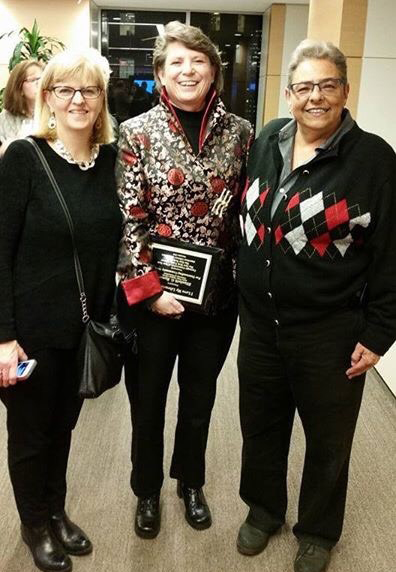
(l to r) Nancy Dryden, Undergraduate Education Services Librarian, Stamford Library; Beth Rumery; and Sue Shontell, Executive Director, New London Housing Authority
Our own Beth Rumery, library director for the Avery Point Campus Library, received the I Love My Librarian Award for her outstanding public service to the community and ongoing commitment to transforming lives through education and lifelong learning. Rumery was one of only 10 librarians within the United States recognized this year for this esteemed honor.
Beth was nominated by Sue Shontell, the Executive Director of the New London Housing Authority for her outreach efforts both to students and faculty at UConn and the community at large. With physical changes to make the library more inviting and a safe location for students to come and discuss issues with sexual orientation, depression and other difficult personal issues, she has created a sense of place within the library. She has also been an active member of the greater Groton community, reaching out to the low income elderly and disabled housing authority and their families. According to the nomination, her work has “opened university speakers to staff and families as a way to reach them and show that they too can go to school, not be intimidated by campuses and connect with their lives.”
As part of the award process, library users nationwide are invited to nominate their favorite librarians working in public, school, college, community college and university libraries. This year more than 1,300 library patrons submitted detailed stories showing how their librarian had an impact on their communities and lives by connecting people with the information access and critical resources they need to succeed in today’s digital age.
Beth received her award, which includes a $5,000 prize, last week at a ceremony in New York City. The event was hosted by Carnegie Corporation of New York, which generously sponsors the award along with The New York Public Library and The New York Times. For more information and a copy of the nomination form, please see ALA’s website at http://www.ilovelibraries.org/lovemylibrarian/2015/15winners
About Carnegie Corporation of New York
Carnegie Corporation of New York was established by Andrew Carnegie in 1911 “to promote the advancement and diffusion of knowledge and understanding.” In keeping with this mandate, the Corporation’s work focuses on the issues that Andrew Carnegie considered of paramount importance: international peace, the advancement of education and knowledge, and the strength of our democracy.
About The New York Public Library
The New York Public Library is a free provider of education and information for the people of New York and beyond. With 92 locations—including research and branch libraries—throughout the Bronx, Manhattan, and Staten Island, the Library offers free materials, computer access, classes, exhibitions, programming and more to everyone from toddlers to scholars, and has seen record numbers of attendance and circulation in recent years. The New York Public Library serves more than 18 million patrons who come through its doors annually and millions more around the globe who use its resources at www.nypl.org. To offer this wide array of free programming, The New York Public Library relies on both public and private funding. Learn more about how to support the Library at nypl.org/support.
About the American Library Association
The American Library Association (ALA) is the oldest and largest library association in the world, with 58,000 members in academic, public, school, government, and special libraries. The mission of the American Library Association is to provide leadership for the development, promotion and improvement of library and information services and the profession of librarianship in order to enhance learning and ensure access to information for all. The ALA administers the I Love My Librarian Award through the ALA’s Public Awareness Office which promotes the value of libraries and librarians.
Husky statue exhibit takes over the library
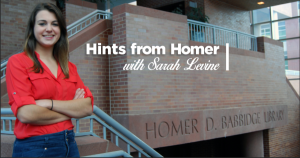 Have you ever seen a husky wearing a firefighter costume? How about running shoes? What about painted with binary code?
Have you ever seen a husky wearing a firefighter costume? How about running shoes? What about painted with binary code?
Stop by Homer Babbidge Library and you just might. Last week, it debuted its winter exhibit: a collection of husky dog statues painted by various organizations and individuals on campus.
The dogs give a visual to the diversity of student organizations here on campus and have allowed some extremely talented individuals to showcase their art. Viewers will be able to vote for their favorite husky with slips located next to the exhibit. Both the artists and those casting ballots have a chance to win gift cards to the Adventure Park at Storrs or Insomnia cookies.
Viewers can check out the creative designs, including the Nursing School Class of 2017’s “Jonathan Goodnurse,” UCMB’s “Marching Husky,” and even “Jonathan the RA” by the Residence Hall Association.
The mind behind the creative project was Agata Harabasz, a UConn senior and president of the Bean Team, a group that works with the Benton Museum of Art to promote the arts on campus through campus projects, museum trips and art demonstrations.
She got the idea from the “CowParade,” where local artists and businesses paint cow statues that are displayed around town. The event occurred in West Hartford in 2007 and has been held in cities around the world. Since UConn already had larger painted dogs in the Co-Op and Student Union, she decided it would be a great idea to bring back the activity as a competition.
In September, student organizations submitted designs for their dog, which were then voted on by the Bean Team. The winning groups were given the statues to paint, which were bought from Cowpainters, a company based in Chicago, and funded by USG.
The event was a great opportunity for organizations to bond while advertising themselves on campus.
“As a club, we decided that participating in this contest would allow for team camaraderie and increase the scope of awareness in the UConn community of Club Track and Field,” said Christina Cotte, who designed and painted the group’s statue along with two other students, Harry Walton and Adam Gagnon.
Chris Browne designed and painted the statue for WHUS, and was happy to be able to demonstrate his passion for the organization.
“I wanted to represent WHUS because of how much fun being a member of the radio station is,” he said. “I’ve been a DJ with the station since my sophomore year and its just full of really cool people and a lot of different opportunities for folk to express themselves.”
Harabasz also got in on the action- she painted the husky representing the Benton, the Beanery and the Bean Team.
Besides that, her favorite submission is the “Four Seasons” husky, painted by Patty Guardiani, a member of the library staff.
“My inspiration for my design comes from my drive into work everyday and enjoying the beautiful grounds at UConn,” said Guardiani about her design. Guardiani is an art lover with two dogs, so she couldn’t resist getting involved in a competition that combined the two.
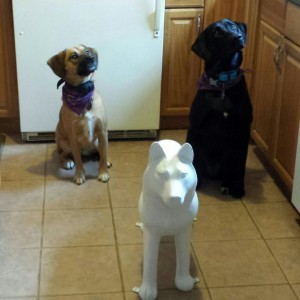
Guardini shared this photo of her two dogs “wondering who the new dog in town is” before she painted it. (Photo credit: Patty Guardini)
Although the future of the dogs after the exhibit is not set in stone, the Bean Team and USG think it would be best if they were made part of the campus in some way.
“We’re going to ask each member or club which location on campus is favorable to them and try and get it in there,” said Harabasz.
Although she is a biology and psychology major, she joined the Bean Team to stay involved in the art community.
“I just wanted to share art with different people instead of just keeping it to myself,” she said.
Harabasz was happy to bring art, something she is very passionate about, to the broader campus community.
“Sometimes students neglect the power that art can have,” she said. “It can actually help with stress relief, and can be a way to express your creativity in a healthy way.”
Guardiani would agree.
“I can get lost for hours with my art projects and it is when I am my happiest,” she said.
Harabasz hopes that this exhibit will make students more aware of the Benton, what she calls a “cultural hub” where you can always come back and see something new.
The exhibition will be on display until February 19th– and this week will be the last week you can vote for your favorite with slips located near the display cases (Both the artists and those who vote have a chance to win prizes!) Make sure you don’t miss your chance to see it- and perhaps be inspired to check out the Benton Museum’s current exhibits or get involved in upcoming events!


